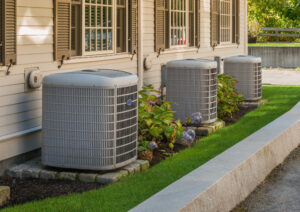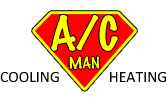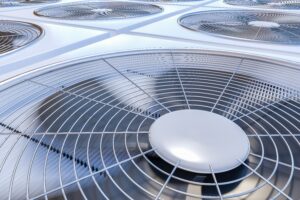An Overview Of An AC Maintenance Services In Houston
Professional air conditioning maintenance is performed by qualified technicians. Each technician is going to have their own list of things that they do, but there are some elements to the service that most licensed HVAC technicians will include by default.
Professional AC Servicing & Maintenance
If you call a licensed HVAC technician out to service your HVAC system, they should clean, test and inspect it thoroughly, including:
 Examining the thermostat: Calibrate the thermostat, and also make sure that it is correctly installed, and located away from any heat sources such as light bulbs or household appliances that give off heat.
Examining the thermostat: Calibrate the thermostat, and also make sure that it is correctly installed, and located away from any heat sources such as light bulbs or household appliances that give off heat.- Check and tighten electrical connections: Technicians should inspect any electrical connections to ensure that they are operating properly. This will not only improve the lifespan of the HVAC system, but it reduces any safety risks also.
- Lubricate moving parts: Poor lubrication can be a source of damage to your HVAC system and causes parts to wear out more quickly. Lubrication will prolong the life of the system.
- Clean the condensate drain line: The condensate drain line is used to drain liquid condensate from the air conditioner. If this line is allowed to become clogged it can lead to water leaks, wetness, and moisture issues. Mold and bacteria can also build up in the drain line. Your technician will check the drain line and the drain pan, and clean them both. If there are cracks and damage then they will address this.
- Check the controls: The system controls should start, operate and shut off the system correctly. If the system is not operating properly then this could be wasting energy, and greatly increasing the running costs of the device.
- Clean or replace the air filters: Some HVAC units have air filters that can be cleaned. Others use disposable air filters. It is important that the air filters are kept clear and un-clogged, to ensure that the filter is operating at its best capacity at all times.
AC Man Houston’s HVAC Tune-Up, Maintenance & Safety Inspections
Our team of trained HVAC technicians will visit properties in Houston to perform a 60 to 90-minute precision tune-up, maintenance, and cleaning, which includes the following 20 part service:
- Measure amperage and voltage of the blower monitor
- Test, calibrate and level the thermostat
- Clean or replace the air filter
- Inspect and lubricate bearings
- Inspect the indoor coil
- Flush, inspect and anti-algae treat the condensate drain
- Inspect the condenser coil
- Test and top off refrigerant as required
- Inspect safety devices
- Inspect the electrical disconnect box
- Inspect electrical wiring and tighten connections as required
- Test and inspect contacts
- Check for exposed electrical wiring
- Inspect and test all capacitors
- Inspect the fan
- Clean the condenser coil
- Inspect service valves
- Measure the temperature differential between supply and return
- Inspect ductwork
- Measure amperage and voltage of the compressor, monitor performance, and check wires
Give us a call or contact AC Man of Houston today with any inquiries!

 1. Thermostat
1. Thermostat When you decide to contact an HVAC technician, it involves a lot more than just choosing a well-known company or brand in order to get this job done. It is also important that you have chosen a company that has technicians onboard who will show respect to your home and to you, while they go about completing their tasks. Below is a list of the 10 qualities that all HVAC technicians should possess.
When you decide to contact an HVAC technician, it involves a lot more than just choosing a well-known company or brand in order to get this job done. It is also important that you have chosen a company that has technicians onboard who will show respect to your home and to you, while they go about completing their tasks. Below is a list of the 10 qualities that all HVAC technicians should possess.